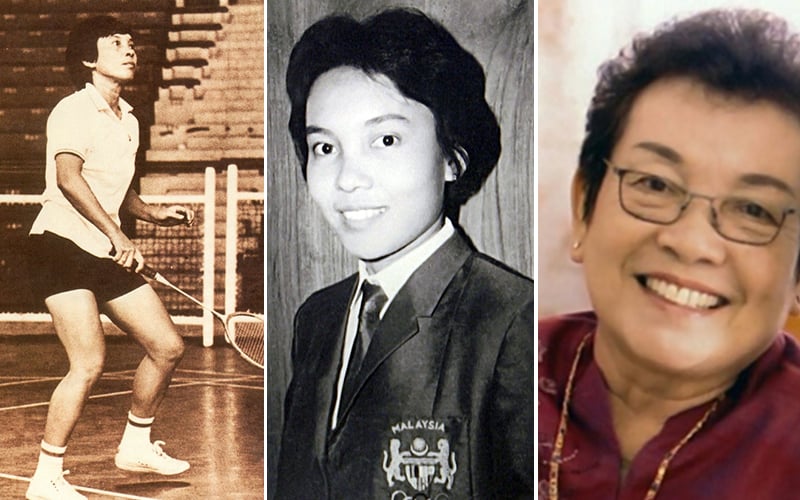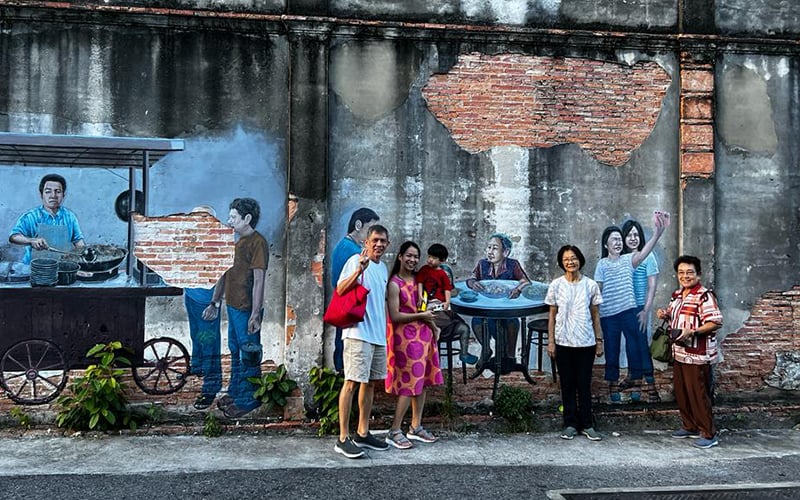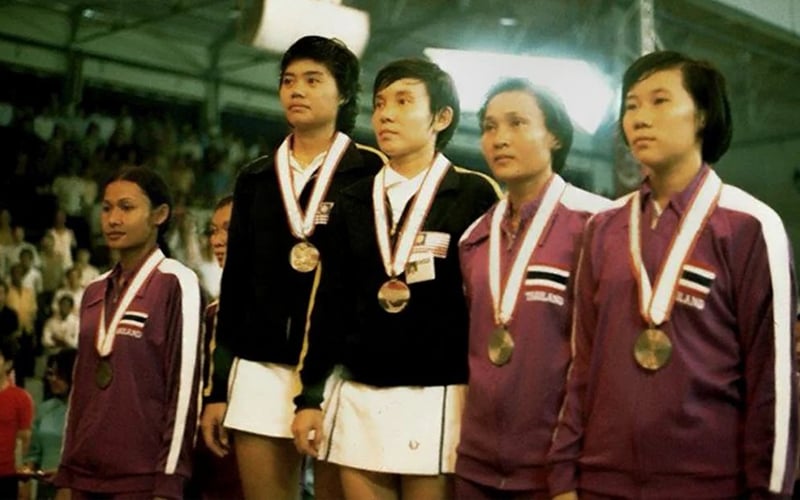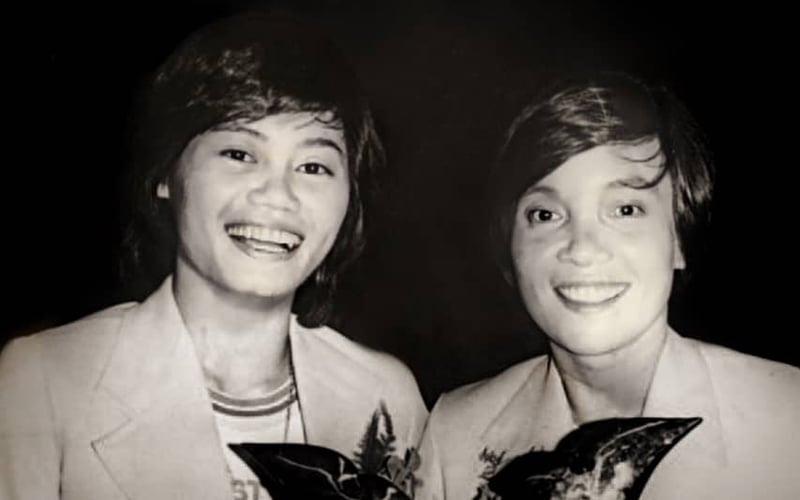
PETALING JAYA: In the playing days of Rosalind Singha Ang in the 1960s and 70s, Malaysian women badminton players were no longer a sideshow, but at centre stage.
Rosalind and another star then, Sylvia Ng Meow Eng, were the Teh Kew San and Tan Aik Huang of the women’s badminton scene.
When they were growing up, there were few outlets for girls interested in sports, and people used to say, “girls can’t do this”.
Rosalind’s badminton education started on gravel at 17, and through dedication and right guidance, she, somewhat quickly, went on to being Malaysia’s best female player.
“I didn’t look at the mountain, I went up to the top,” Rosalind said ahead of Sports Flame’s reunion of sporting heroes on Dec 9 at Concorde Hotel, Kuala Lumpur.
The King and Queen will join over 100 athletes, coaches and officials, from the 60s, 70s and early 80s, at the event, which is supported by FMT.
Rosalind said she had attended every edition of Sports Flame since 2011, and was grateful to former sports journalists George Das, R Velu, Lazarus Rokk and Fauzi Omar for bringing together the icons.
“We were young athletes when we first met, and the event is the only time we get a chance to meet each other in our old age,” said Rosalind, 82.

Even as an octogenarian, she continues to show the tenacity she had displayed during her playing career at top level between 1965 and 1975.
She’s still at her decades-long job as a key executive with a granite quarry company in Kedah, and has no intention to retire.
“I love my work with rocks,” said Rosalind, who rocked world badminton at her peak after emerging from the Sunrock badminton club in Alor Setar.
Rosalind is single, and when asked what she does in her spare time, she said sweetly: “I talk to my plants, travel with friends and family, and think about reunions.”
Love of country
The playing days Rosalind remind us how to rise above obstacles to succeed. Back then, players with day jobs had to take their own leave, and use their own money upon being chosen to represent the country. Some had to contend with meddling officials.
Rosalind said she put the country’s interest first, and it drove her to make Malaysia proud. According to her, the joy came when the national anthem was played, especially in a foreign land. “You feel all your hard work and sacrifices were worth it.”
On her playing style, she said, unlike today’s power game, she “waltzed on the court” with stroke play. She was too modest to mention she had the ability to produce magic in frantic situations.
She said: “Compared to my time, the players today are super-fast, highly-skilled, and a delight to watch.”
Rosalind, herself, thrilled spectators at major championships home and abroad, winning the women’s singles, doubles, and even the mixed doubles with the likes of legends Kew San, Tan Yee Khan and Ng Boon Bee.

Beating boys before beating the big girls
The notion of a girl beating a boy in any sport was unbelievable at the time, and it took 156cm tall Rosalind to do the unlikely.
Rosalind’s mentor, Dr M Sundararajan, the then Kedah Badminton Association president, made her play against boys of the Sunrock badminton club, and even he was surprised she beat them.
The girl, who began playing with worn-out shuttlecocks on a sand patch behind her grandmother’s house in Penang, was poised for fame.
For four years from 1964, a Rosalind-led Kedah women’s team ruled the inter-state Heah Joo Seang Cup, a tournament which, together with the Foong Seong Cup, for men, were then the symbol of inter-state badminton supremacy.

Sundararajan then entered Rosalind, 24, and her doubles partner, Teoh Siew Yong, as an independent team, at the 1965 Nehru Memorial Tournament in India.
They emerged runners-up in their first international, and in the same year at her maiden SEAP (now SEA) Games, Rosalind won gold in the singles and silver in the doubles with Teoh.
Rosalind recalled she faced strong opposition from players such as Yap Hei Lin (Penang), Sylvia and Ong Ah Hong (both Johor) and Katherine Teh (Selangor) to stay on top.
In the 1966 Commonwealth Games in Kingston, Jamaica, Rosalind and Teoh won the bronze in doubles, contributing to the five-medal haul by the Malaysian team.
In the same year, she won the mixed doubles gold medal with Kew San at the Asian Games in Bangkok where they beat fellow Malaysians, Eddy Choong and Tan Gaik Bee.
At the 1967 SEAP Games, Rosalind took the silver in the singles and won the gold with Teoh in the doubles.

By 1970, Sylvia had become a formidable opponent to Rosalind in the women’s singles.
In 1974, Teoh retired, and the fearsome pair of Rosalind and Sylvia emerged, their first victory together coming at the Christchurch Commonwealth Games where they took bronze in the doubles.
In 1975, Rosalind was pressured by a top official of the Badminton Association of Malaysia to exit the national team to make way for younger players.
She considered it unfair as she was at the top of her game having won gold medals that year in the SEAP Games doubles with Sylvia, in the mixed doubles with Dominic Soong and in the women’s team event.
By the time she retired in 1975, Rosalind had come a full circle – player, captain and coach of the Malaysian women’s team.
Rosalind, who was born in the Yala province in southern Thailand, and studied at Pulau Tikus Convent, was made a Datuk by the Kedah palace in 2013.
The Kedah Museum and the National Museum in Kuala Lumpur showcases her legacy, while her induction into the hall of fame in Malaysia and Thailand amplified her impact on sport.
She wrapped up the interview by declaring, “I love the atmosphere of badminton, I love the soul of badminton.” - FMT



No comments:
Post a Comment
Note: Only a member of this blog may post a comment.